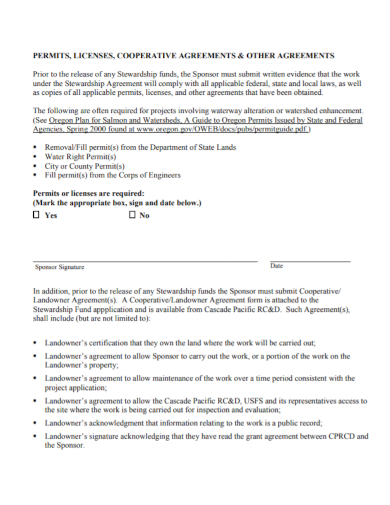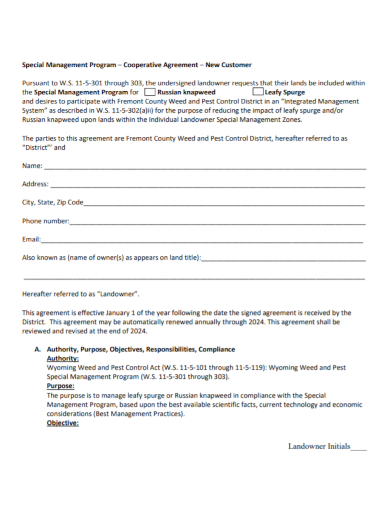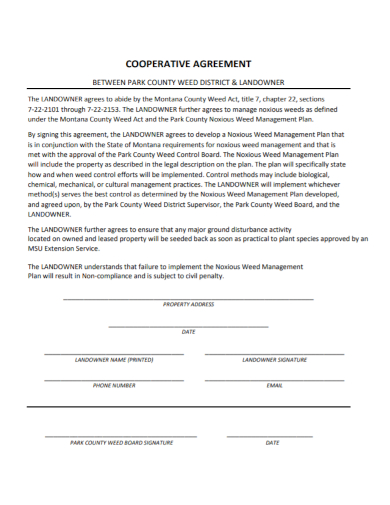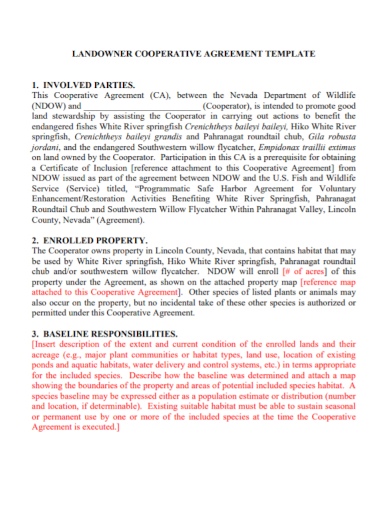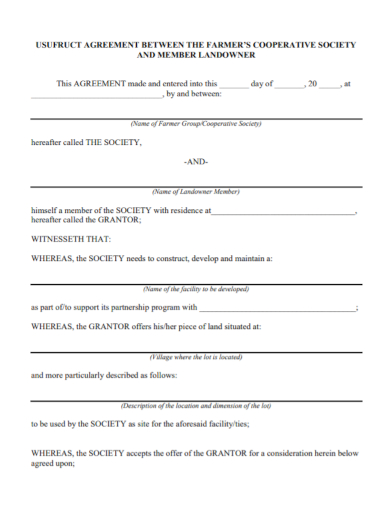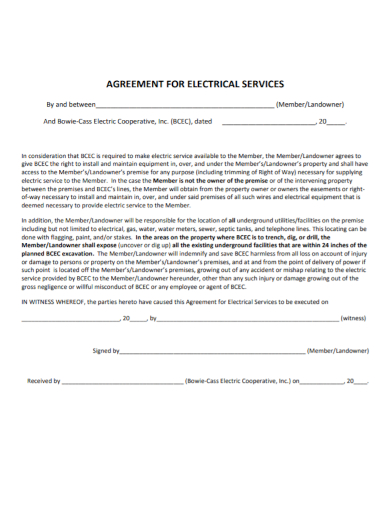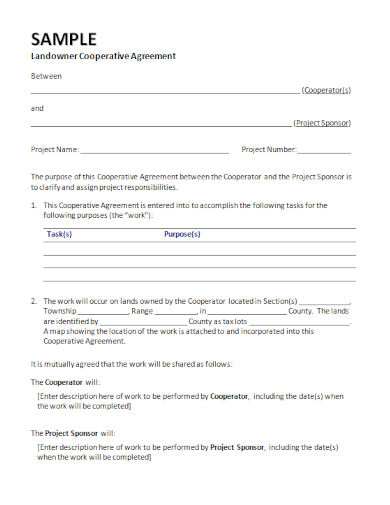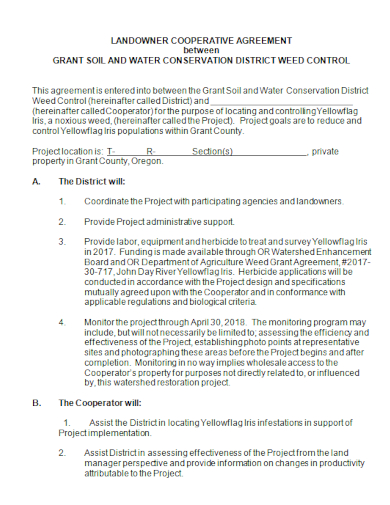The market value of the land property is something that steadily rises over time. This is especially true for land that has a strong competitive advantage in both the commercial and domestic markets. This could sometimes imply that they are in a good location in relation to a commercial area, where they can help businesses and other commercial operations. There is a lot of opportunity for businesses in those areas, and even if the property is not intended for commercial use, domestic homeowners are eager to pursue it because of the view or the environment in which it is located. For the time being, the best option for you as a landlord or property owner is to lease the property to your prospective customers. Sure, you can use the site for your own purposes and start your own business, but leasing it out to potential tenants can be much more convenient for you, but it also comes with a lot more risk. A well-written land leasing proposal is an excellent strategy for reducing the possibility of these hazards occurring. It is critical to have a document in place that ensures you and your client are on the same page regarding the overall terms of your agreement.
Lease proposals, like most proposal documents, do not actually propose anything to your customers. Rather, it responds to your client’s inquiries about the terms and conditions of the lease that they would be entering into with your company. As the property owner, you must be able to provide your client with a well-written lease proposal in order to protect both your rights as a property owner and the property itself. The document, in addition to serving as a working document between you and your client, also serves as a form of protection for you in the event that either or both of you encounter a legal problem. Because of the structure and content of the document, you will have a significant competitive advantage in court. It can help you ensure that whatever your customer is doing on your property is well within the parameters that you and your client have agreed upon beforehand. This is critical because there have been some bizarre cases where landlords have been conned out of their homes simply because they lacked the necessary paperwork and documentation to defend themselves. Make the most of the document you’re about to write by reviewing the landowner cooperative agreement samples provided in the following section. If you decide to create your own property lease proposal after familiarizing yourself with the document and reading through the samples, feel free to use them as recommendations or even templates.
7+ Landowner Cooperative Agreement Samples
1. Landowner License Cooperative Agreement
2. Landowner Management Cooperative Agreement
3. Property Landowner Cooperative Agreement
4. Landowner Cooperative Agreement
5. Landowner Cooperative Society Agreement
6. Landowner Cooperative Services Agreement
7. Sample Landowner Cooperative Agreement
8. Landowner Cooperative Conservation Agreement
What Is a Landowner Cooperative Agreement?
A land lease contract is a document that property owners or landlords, such as yourself, may use to respond to a client’s questions about the terms and conditions of the lease that they intend to sign with your company. In this document, you can outline the property under consideration as well as the terms and conditions that the landlord will provide to prospective renters, among other things. Using this form, prospective clients can examine various proposals from a variety of properties and compare which terms and conditions are most favorable to them. Owners of real estate, on the other hand, have greater independence in writing the agreement because it only applies to their own property. Leasing proposals are extremely useful tools for landlords to have, especially when determining whether or not their prospective tenants are reputable and trustworthy enough not to cause any damage to the property. Lease offers are more difficult to manage than rental proposals due to the overall nature of the agreement, making them more difficult to administer. Rental proposals are only valid for about 1-2 months, whereas lease proposals are valid for at least a year or more, making the overall deal a little more difficult to terminate.
How To Write a Landowner Cooperative Agreement
A lease proposal must be able to cover a wide range of provisions in order to do its job of protecting you and your property as effectively as possible. Property owners frequently have their attorneys or legal advisors draft the document on their behalf to ensure that all legal aspects of the document are completely covered. Certain provisions may be included in the draft, but the nature of the land you will be leasing or the nature of the business you will conduct on-site will have a significant impact on whether or not these provisions are included. Regardless of its format, your document must always be able to cover the provisions listed below, regardless of its shape or size.
- Title
Your document’s title should be “Lease Proposal,” which is an appropriate term. In the advertisement, including the property number or solicitation number of the land for sale. It would be helpful if you could provide the dates when the listing was created. - Address
Describe the environment in which your property is located. Along with the state, the physical address, city, and ZIP code must be provided. If you are unable to provide an exact address, you can provide specific physical descriptions of the property. - Details
Provide specific information about the space that will be rented, such as a floor plan and the total square footage of the available space. The specifics should contain enough information to demonstrate how the rate is broken down in order to arrive at the set of payments that you have specified. - Fees
Calculate the total rental fee for the entire term using the measurements you took previously. Divide the material into manageable chunks so that the tenant can understand it easily. It would also be helpful if you could explain how you came up with that figure. - Additional Information
Emphasize the property’s extra features, such as additional parking and storage space. Give the number of available parking spaces per person in the parking lot as well. Some states may charge different parking fees for different types of properties, so make sure to include that information in your listing as well. - Renewal options
Distinguish between the initial lease proposal and the lease extension agreement. If you intend to increase your monthly rent or change the payment term, you must notify your landlord as soon as possible. - Signatures
To make the proposal legally enforceable, include a section at the bottom of the paper where both you and your client can sign. You can have the agreement signed by your legal advisors or attorneys, as well as your accountants, to ensure that it is legally binding.
FAQs
Is leasing better than renting?
A lease may be the best option for you if you want a long-term commitment to your arrangement. Most landlords prefer leases to rents because leases provide far more stability and long-term occupancy than rental agreements.
What is the difference between a lease and a rent?
The only difference between the two is the amount of time they last. A rental agreement is usually for 1-2 months, whereas a lease is usually for at least a year, and possibly much longer.
What does it mean when a house is for lease?
A lease is a legally binding contract that defines one party’s needs and requires the other party to agree to those needs. The paperwork ensures that the tenant has full access to the property and that the landlord receives all rent payments on a consistent basis for a set period of time.
Essentially, the only difference between these two is the amount of time they cover in total. Rental agreements are typically for 1-2 months, whereas leases are typically for at least a year and, in some cases, several years.
Related Posts
FREE 10+ Trial Agreement Samples In MS Word | Google Docs | Apple Pages | PDF
FREE 9+ Shop Rental Agreement Samples [ Commercial, Lease, Tenancy ]
FREE 10+ Charter Agreement Samples In MS Word | Google Docs | Apple Pages | PDF
FREE 10+ Mentoring Agreement Samples In MS Word | Apple Pages | PDF
FREE 10+ Partner Agreement Samples In MS Word | Google Docs | Apple Pages | PDF
FREE 10+ Individual Agreement Samples In MS Word | Google Docs | Apple Pages | PDF
FREE 10+ Strategic Agreement Samples In MS Word | Google Docs | Apple Pages | PDF
FREE 10+ Equity Agreement Samples In MS Word | Google Docs | Apple Pages | PDF
FREE 10+ Producer Agreement Samples in MS Word | Apple Pages | PDF
FREE 10+ Grant Agreement Samples In MS Word | Apple Pages | PDF
FREE 8+ Meeting Agreement Samples in MS Word | Google Docs | Apple Pages | PDF
FREE 10+ Community Agreement Samples In MS Word | Google Docs | PDF
FREE 8+ Real Estate Option Agreement Samples in MS Word | PDF
FREE 10+ Call Option Agreement Samples In MS Word | PDF
FREE 10+ Advertising Agreement Samples In MS Word | Google Docs | Apple Pages | PDF

